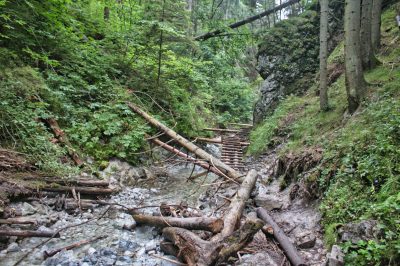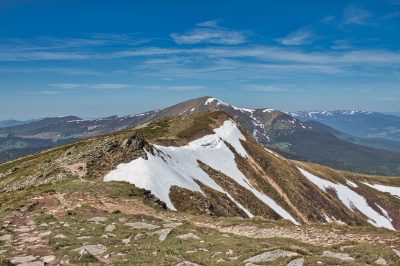Clear water, clean air, many plants in the water and on land. Everything is as pristine as possible. A tour by canoe through Aukštaitija National Park offers the most beautiful sides of Lithuanian nature. I, too, have been through this natural landscape twice by boat and would come back anytime.

By canoe in Aukštaitija National Park down the route of the lumberjacks
The region is one of the most pristine in Lithuania. The Buka River, on which we paddle, was one of the main transport routes for wood from the forests of Aukštaitija. Logs used to float down the river here en masse. Forestry seems to have done little harm to the forest, at least as far as can be seen from the canoe. “The region is also called the Lithuanian jungle,” boat rental manager Rimvydas Grusnius tells us. I’m happy to believe him.
Every few dozen meters a tree lies partly or completely in the water. Brushwood protrudes into the riverbed. That’s why we have to move the boats twice. Then we have to get out and carry the boat, which more than you would think, a few dozen meters to the next gap in the reeds. Fortunately there are three of us. Alone it would be more difficult. How long we would have to wait for help – I don’t know.
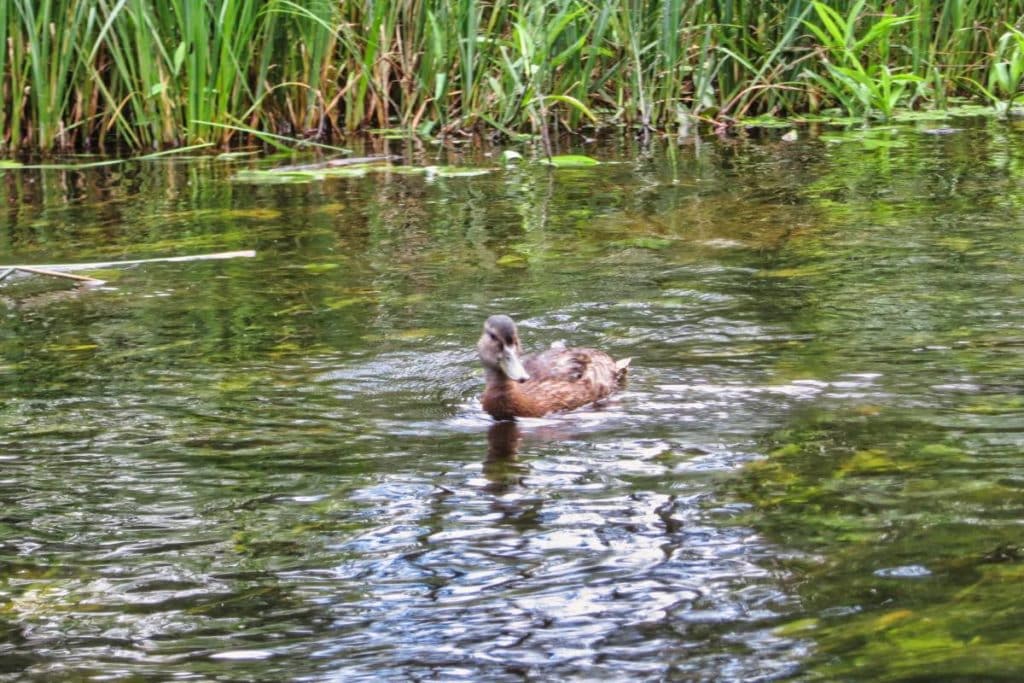
Aukštaitija National Park – The oldest national park in Lithuania
There are not many people in the oldest national park of the country. Aukštaitija can be freely translated as Highland or Upper Lithuania. Of course, there is also a Lower Lithuania, which is called Žemaitija. Aukštaitija National Park is located about 100 kilometers north of Vilnius. About 70 percent of the national park is covered by forest. Accordingly, one is sometimes quite lonely on the canoe trip. I only encounter a few fish or water birds on the way. Many of the plant and animal species found here are on Lithuania’s Red List.
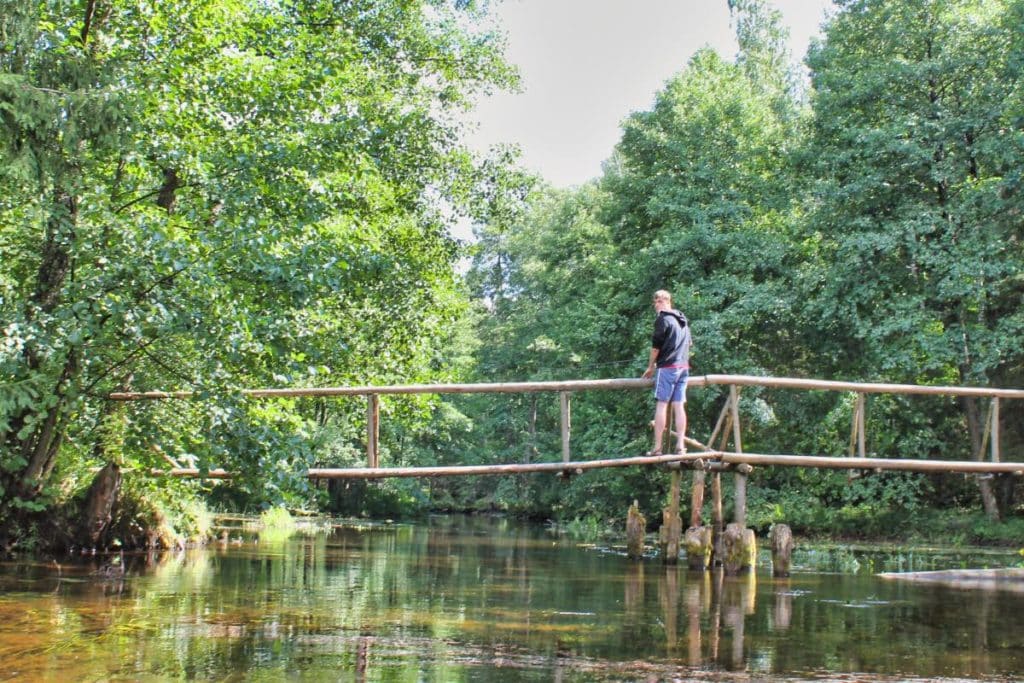


Leisurely drifting in the Buka River
It would be nice if I could just let myself float down the Buka River like a log until I would eventually arrive at my destination. I would bathe a round in the clear water and if I got stuck somewhere, another tree trunk would surely push me at some point or a lumberjack would push me back into the stream. But nothing like this happens. Instead, I paddle for hours and have to at least correct the course in the calmer moments, so that the current in the river Buka lets me drift in the right direction.
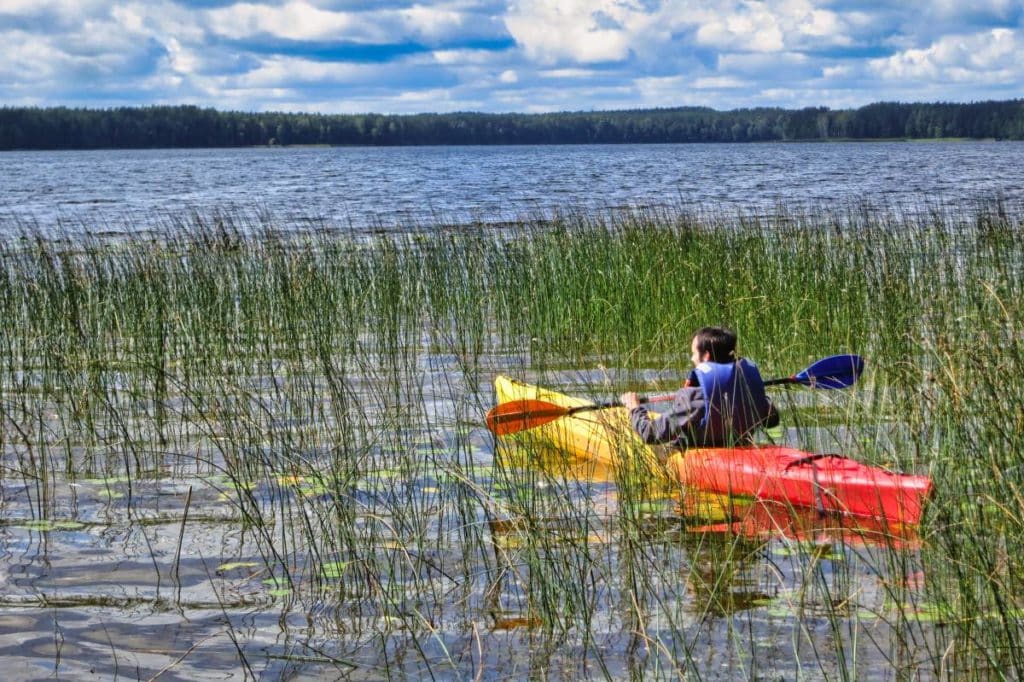
Quite a few visitors fall into the water
In the kayak paddling is therefore often somewhat monotonous. Sometimes to the right, sometimes to the left. At least the river makes it more pleasant. The Buka has a very relaxed flow speed. Nevertheless, I am still a bit unbalanced and only occasionally dare to take the camera out of the waterproof bag that Rimvydas Grusnius gave us.
“About 15 percent of all visitors fall into the water,” he says. Also during my first visit to Aukstatija, which was back in September 2007, one of our boats tipped over. “It usually happens when getting on and off the boat,” Grusnius says. I also feel unsafe, especially at the beginning, and panic when my fellow travelers Rob from Canada and Julia from Lviv in Ukraine ram me with their boat.
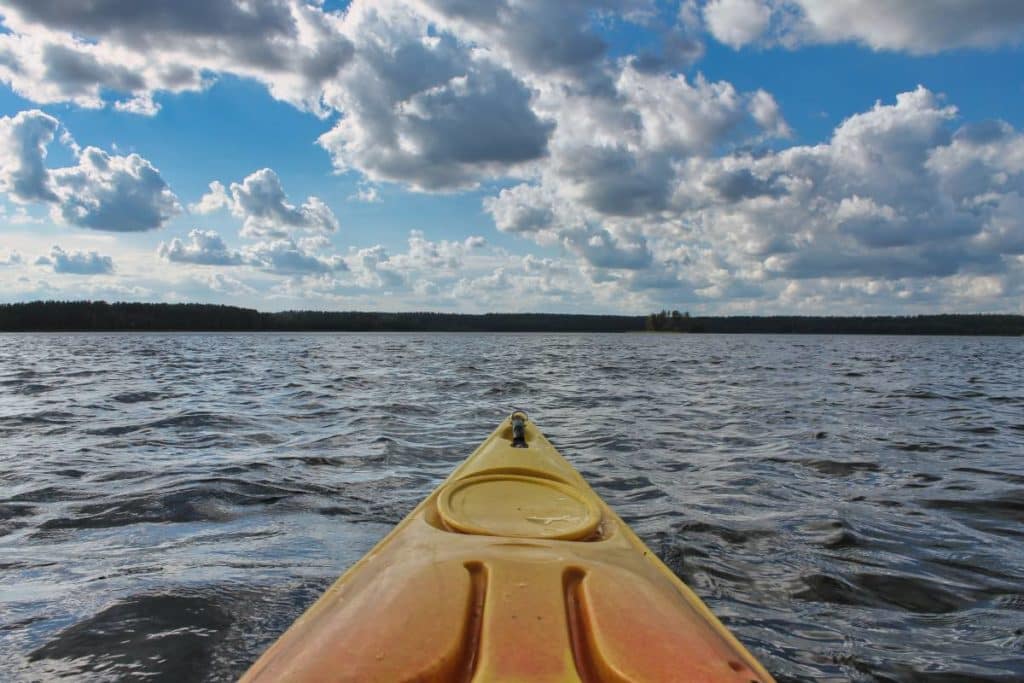
Across a lake with seven islands
After a few hours of paddling, my arm muscles are aching. Rob has read the map wrong and we have to make an extra tour criss-crossing one of the lakes in the national park. And that only to find out at the end that it doesn’t go on there and we have to go somewhere else entirely. There are dozens of lakes in Aukštaitija National Park. Kretuonas is the largest of the lakes.
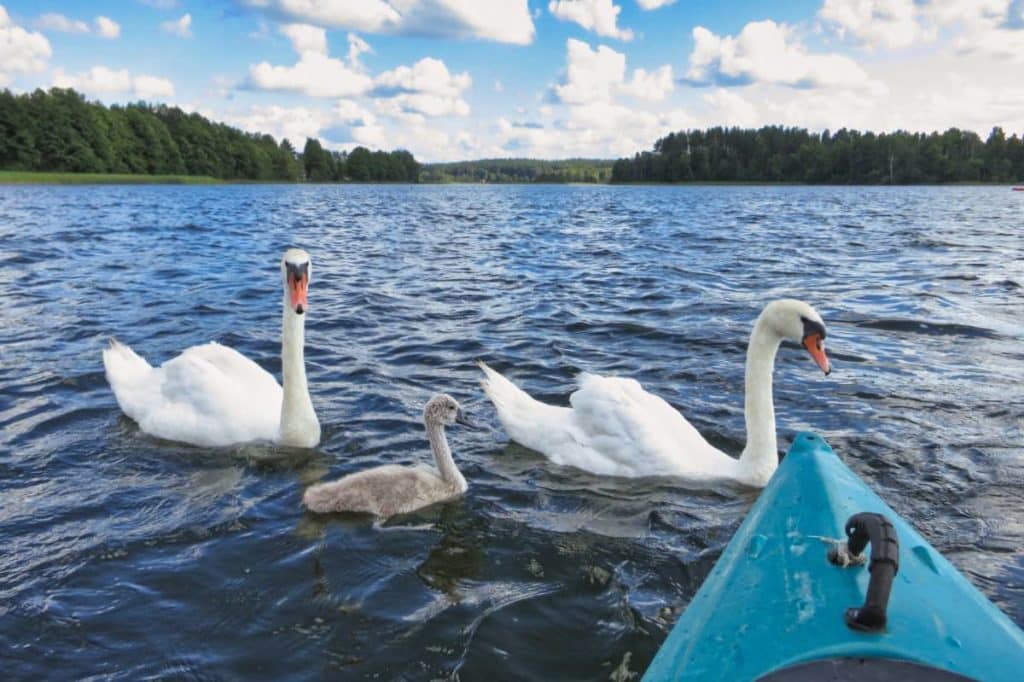
Tauragnas is 62.5 meters deep, which makes it the deepest lake in Lithuania. We, on the other hand, have to cross the Baluošas, in which there are seven islands. This confuses us, because from the water we only see reeds and more water. After the odyssey, however, we find the right outlet and can continue our tour.
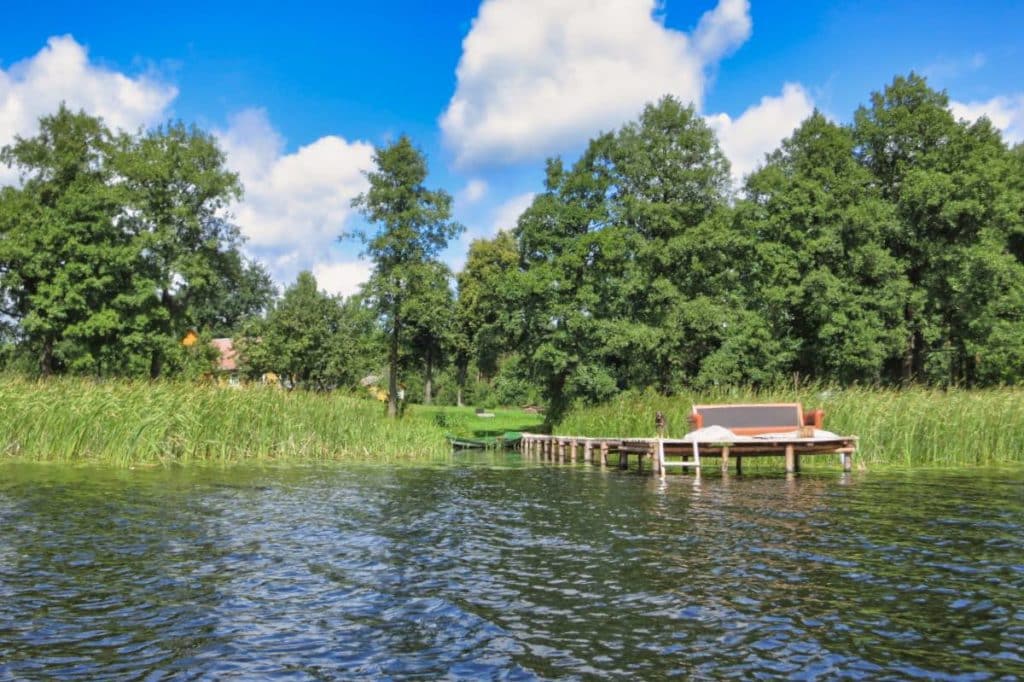
Clear water makes bathing breaks possible
I would like to cool down during the ordeal. But bathing weather prevails only conditionally on this day. It is not exactly hot. Nevertheless, swimming would be allowed even in the river. And the water is so clear, one would like to jump in immediately. But on this day only those that have gone out for fishing in their hip-length rubber pants cross our paths. We can observe the small fish in the river swimming through the clear water. Occasionally a mother duck with her ducklings or some swans are happy about some bread left over from breakfast. We enjoy the clear air in one of the most secluded regions of Lithuania.

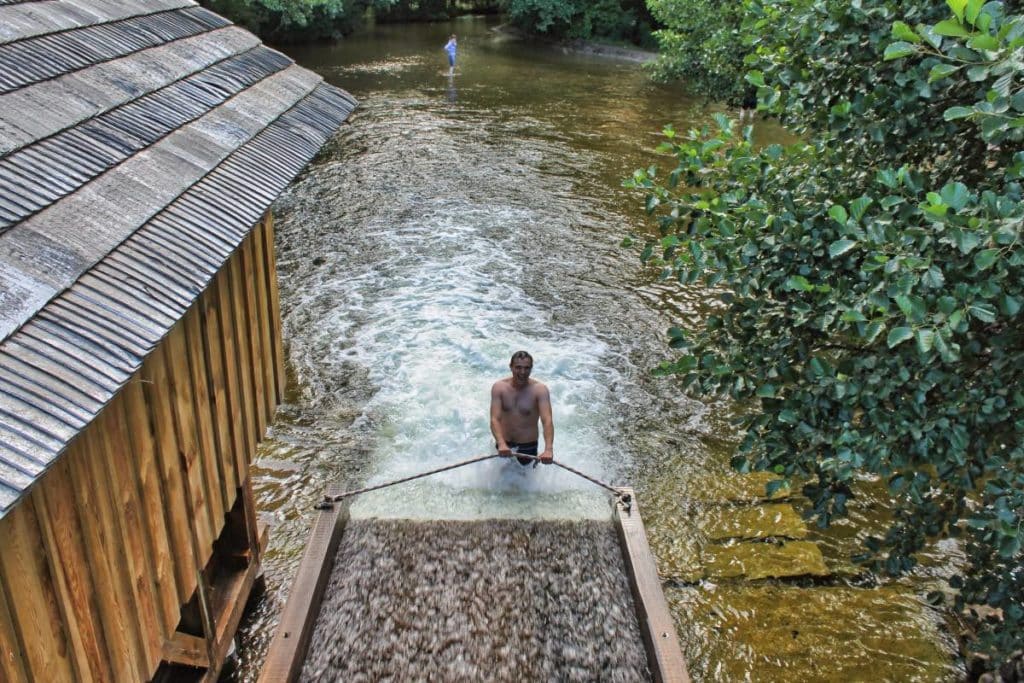
Sightseeing at one of the most beautiful mills in the country
Nevertheless, the ride is not always comfortable. Especially the stretches across the lakes are really exhausting when it’s windy. After about six hours we finally fought our way through the water plants and against the wind and arrived. We had already parked our car at the water mill of Ginučiai before departure.
Now, after the effort, one would like to jump into the outlet of the mill, as some visitors do. The mill from the second half of the 19th century is now a popular sightseeing spot. Some families are there, there is a barbecue. The owner of the boat rental, Rimvydas Grusnius, loads our boats onto the trailer. “I’m glad you didn’t fall in,” he says. I’m glad, too.
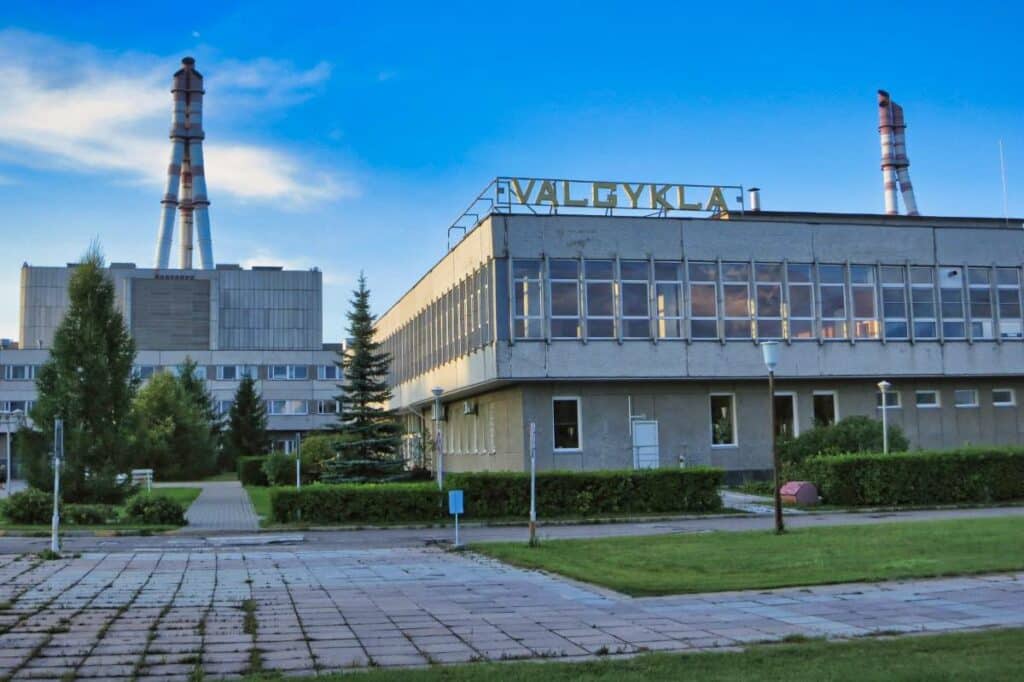
Other sights in and around Aukštaitija National Park
Besides the national park itself, there are some beautiful sights you should plan to see during your visit.
Beekeeping Museum in Stripeikiai
The Stripeikiai Beekeeping Museum is the museum of beekeeping in Lithuania. Founded in 1984, today it consists of many different exhibits. They show the development of beekeeping in Lithuania. Outside you can see many different beehives, some of which are real works of art. In some of the hives you can look through glass windows and understand how bees live. By the way, there are also three bee colonies from Ukraine, which Ukrainian President Viktor Yushchenko gave to his Lithuanian counterpart Valdas Adamkus in 2005. However, the museum is open only from May to October.
Palūšė with the wooden church
In Lithuania, unlike in Ukraine, for example, there are few wooden churches. Therefore, the wooden church of St. Joseph in the village of Palūšė is all the more amazing. The church with its beautiful folk architecture and wooden tower is definitely worth a visit. By the way, as usual with wooden churches, it was built without nails, because after all Jesus was nailed to the cross with nails.
Ladakalnis Viewpoint
The Ladakalnis hill with its 176 meters is the highest point in the area. A wooden path leads up to the top, from where you have a beautiful view of the surrounding lake landscape. Once the hill was sacred to the local pagans and was used as a sacrificial mountain for the goddess Lada, who gave it its name.
Ignalina Nuclear Power Plant
Nearby the National Park is also the decommissioned Ignalina Nuclear Power Plant, which was the last operating Chernobyl-type reactor in the EU until its shutdown in 2009, and is therefore featured in some scenes of the HBO series Chernobyl. On tours you can even visit the inside of the reactor and see the control room, which is identical in construction to the one in Chernobyl.
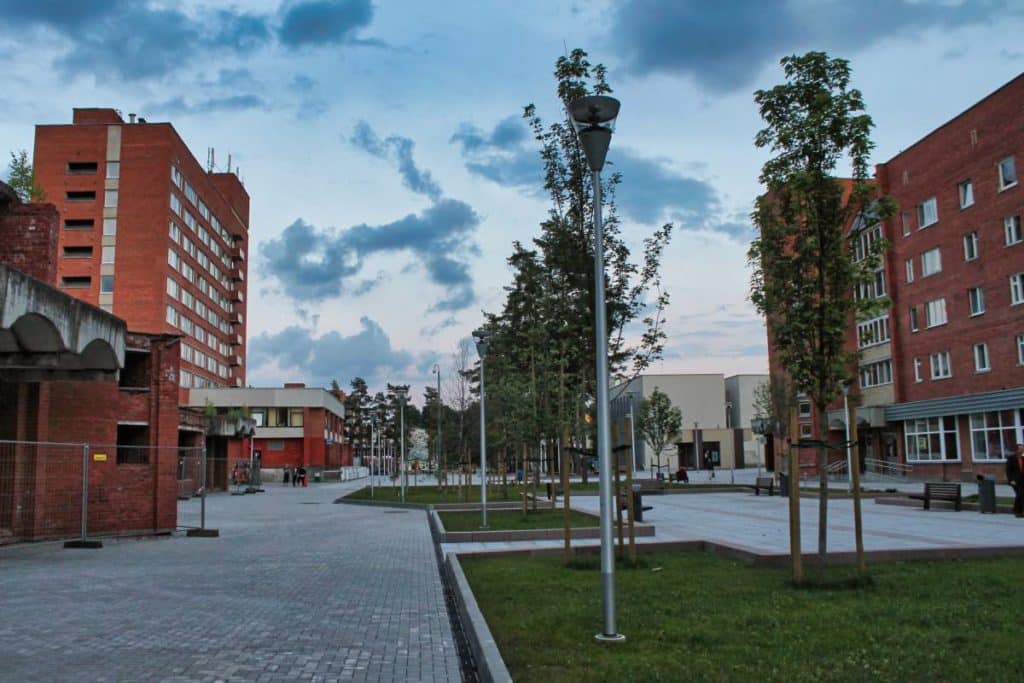
Visaginas
The city of Visaginas was built as a settlement for the nuclear power plant and of course, will not be dismantled as the power plant is shut down. Here you can see how a planned nuclear city was laid out in the Soviet Union. None of the buildings here are older than from the 1970s. The majority of the population here still speaks Russian, because Russian Soviet citizens were settled here for the operation of the power plant.
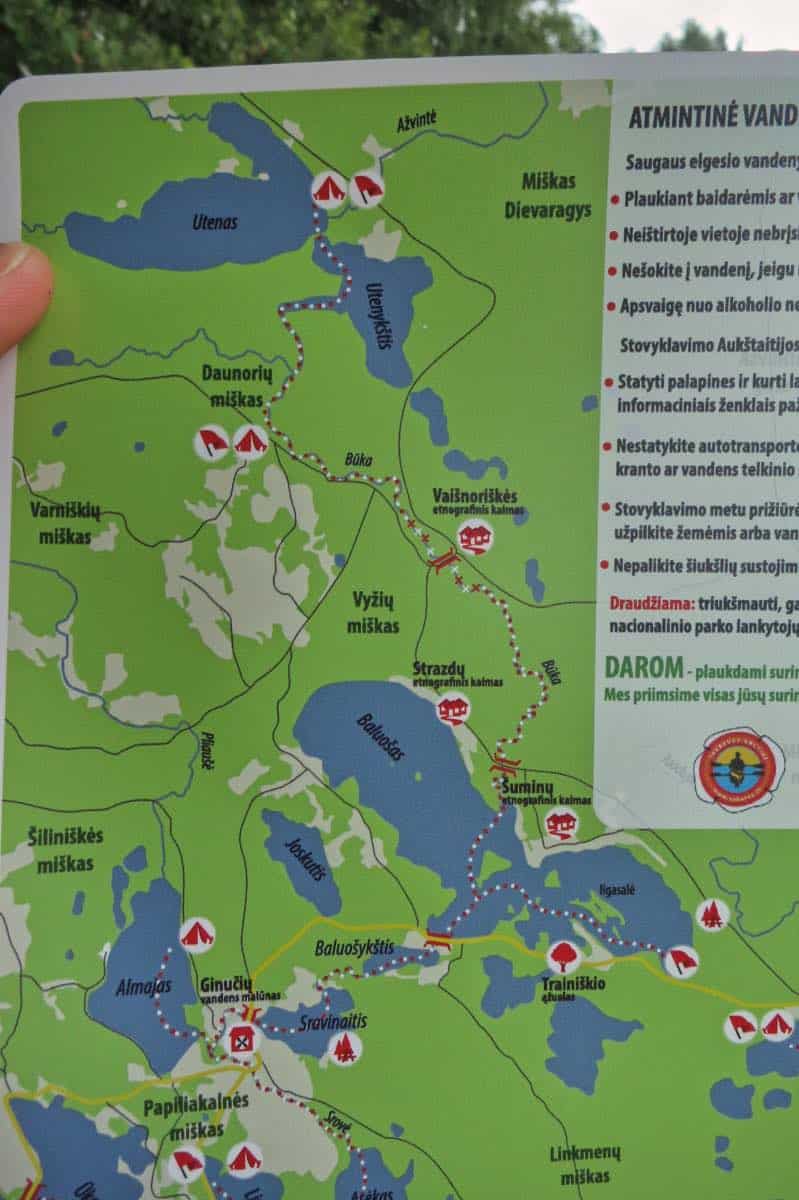
Aukštaitija Nationalpark Reisetipps
Getting to the Aukštaitija National Park
I myself arrived by car for both tours. You can usually park the car at the destination of your tour. The transport to the starting point of the canoe tour is organized by the canoe providers on request. In fact, this is usually necessary.
Canoe rental in Aukštaitija National Park
I rented my boat from Sakarva boat rental, which offers all kinds of canoe tours in Lithuania. For our six-hour tour, we paid a total of 20 euros for the transport of the boats. Normally 30 euros would have been due. For this, up to 8 people can come along. The 2-person kayak cost 15 euros to rent, my 1-person only 10. Prices vary depending on the day of the week and the season. Besides Sakarva there are other boat rentals.
Tours in Aukštaitija
There are several tours through Aukštaitija and the surrounding area, where you can get to know the region very well. Here is a selection for you, which we can recommend.
- Day trip from Vilnius to Aukštaitija National Park – On this trip you will see the entire national park, but without a boat ride. Nevertheless, you will see all the other sights of the region.
- Day trip by canoe through Žemaitija National Park – Žemaitija is just as beautiful as Aukštaitija and there is also a day trip to it from Vilnius, where you can explore the landscape by canoe.
- Day trip from Vilnius to the filming locations of the TV series Chernobyl – Discover all the filming locations of the legendary HBO series in one day and experience the Ignalina Nuclear Power Plant live on site.
Book tips for Lithuanian and the Baltics
There are only proper travel guides for the whole Baltic States not for Lithuania alone. But the Lonely Planet is a good choice for getting more information and a good overview, especially if you are visiting more than just Lithuania.
No products found.
Labas! That means hello in Lithuanian. And even if there are only a few million speakers of this Baltic language, the Complete Lithuanian Beginner to Intermediate Course helps you very well to learn at least a little of the language. This will not only help in everyday life, but will also open the heart of one or the other Lithuanian for you.
No products found.
Especially if you are traveling by car, it is good to have a map with you. Lithuania has a pretty good network coverage, but there are still one or two dead spots.
No products found.


